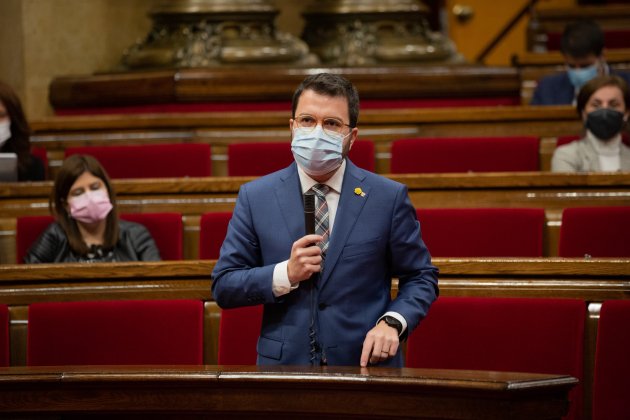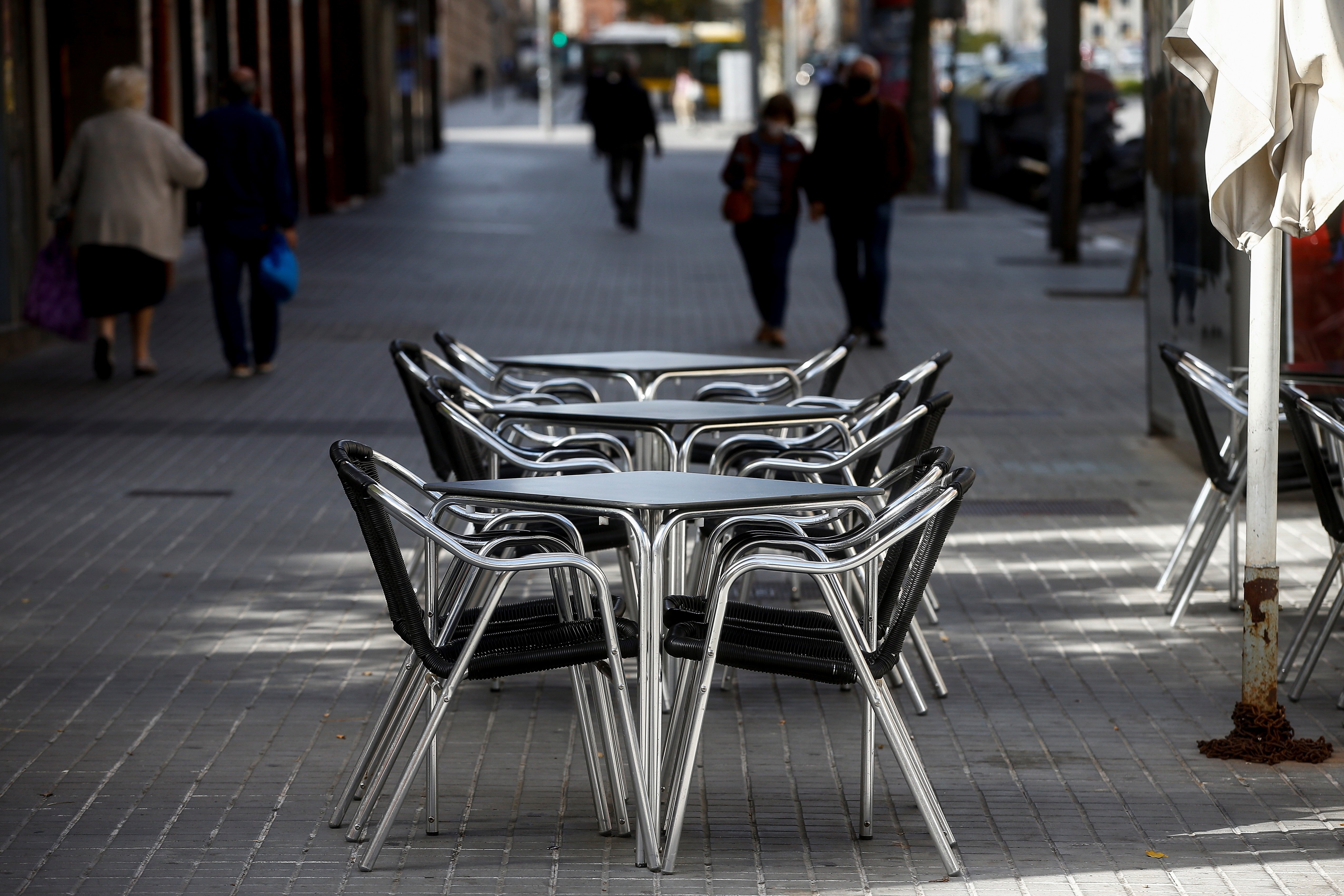The Catalan government says that, when the moment arrives, it will relax Covid restrictions "very gradually". This was clarified today by acting Catalan president Pere Aragonès in his appearance in Parliament to give explanations about the government's handling of the Covid-19 pandemic. On a day when Catalonia's virus transmission rate, the Rt, has fallen below the critical level of 1 for the first time in a month, the ERC politician also defined specific levels for certain Covid indicators that would trigger a relaxation in current measures.
Aragonés stressed that the easing of measures will only take place when the public health situation in relation to Covid-19 shows solid improvement, and he recalled that "rapid de-escalations do not give optimal results, they can create a short-term mirage, but do not provide strength in the medium and long term". He asserted strongly that the Catalan executive will apply mobility restrictions linked to travel and social gatherings "as much as necessary to protect the lives of the public" if the health statistics do not improve.

Catalan vice-president Aragonès, who is acting president of Catalonia, in Parliament this Wednesday / Photo: David Zorrakino (Europa Press)
As for the “unpopular restrictions,” the vice president defended them by assuring that they are working and that an incipient change of trend can be seen which now needs to be consolidated: “Now we need persistence, patience and continuing commitment to alleviate the pressure on the health system".
Three indicators to guide the easing of measures
In his parliamentary address, the vice-president listed objectives for three indicators which will make it possible to start de-escalating the restrictions: when the Rt transmission rate falls below 1, when there are fewer than 1,000 new confirmed cases per day, which he said would be a "manageable" figure for the Catalan health system, and when the number of intensive care places occupied by coronavirus patients falls below 300.
"If we achieve these indicators of stability, it will allow us to face the recovery of our social and economic life in so many areas," he said, predicting that this points will arrive in "the coming weeks."
How close is Catalonia to these levels?
The latest data released today by the Catalan health ministry shows that one of these three goals has, for the moment at least, been achieved: the virus transmission rate, the Rt, has fallen below 1 for the first time in a month, with today's figure of 0.96 being the lowest since October 3rd. Current levels for the other indicators quoted are, however, still too high: the number of new confirmed cases in Catalonia this Wednesday was 3,710 (when it needs to fall below 1,000) and a total of 489 ICU beds are currently occupied by coronavirus patients (still well above the figure of 300).
Looking at other figures, the outbreak risk (EPG) index in Catalonia is also falling, but levels are still astronomically high: today's outbreak risk figure of 747 is down from 904 five days ago, but even a level of 100 is regarded as "high". There have been 38 deaths from Covid and 3,710 new confirmed cases declared in the last day, according to the Catalan health authorities, and pressure on hospitals also remains intense.
Outbreak risk and ICU patients
The map below shows current outbreak risk (EPG) index by comarques (counties) in Catalonia; and the chart below that shows numbers of Covid-19 patients in intensive care places in Catalonia.
Main image: A terrace of a restaurant in the Barceloneta neighbourhood during the second state of alarm / Efe

